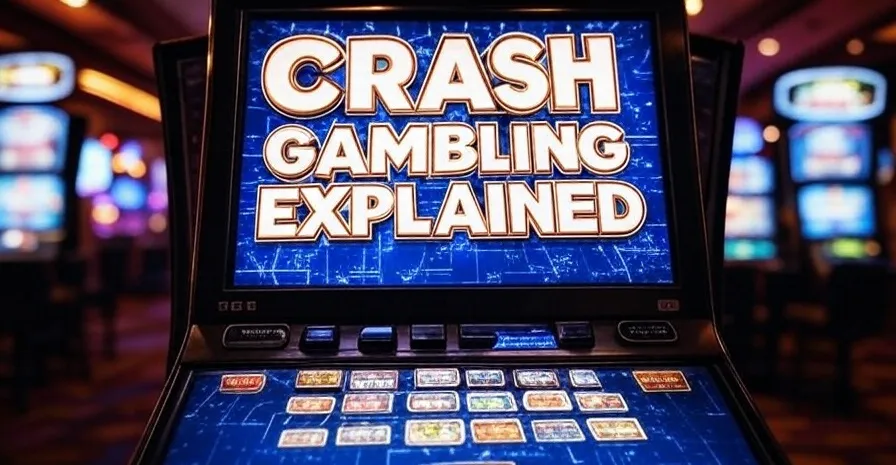Craps is like a rock concert in the world of casinos — loud, quick, energetic, and always the best time. No matter if you’re rolling the dice online in your pajamas or throwing them across a real table, this game knows how to bring the heat. No wonder, craps pulls in everyone from newbies to seasoned pros — the mix of unpredictability, noise, sweet rush of adrenaline, hard to resist. But hey, if you need more than good vibes and a lucky streak, like actual, consistent winnings, you’ll need a solid approach — ideally, the best craps strategy you can find.
Whether you’re into the craps for the first time or trying to level up your skills, knowing the right strategy can totally boost your chances to win. We’ll break down the most effective craps strategies of players who really know what they do — no fluff, just solid advice. We’ll learn how to place smarter bets, manage the bankroll, avoid the traps, eat your chips, and play with confidence.
Craps Basics & Table Layout
To actually get into craps and use an effective strategy, you’ve got to start with basics. That means figuring out what’s going on at that wild-looking game table. It might look like someone spilled alphabet soup on green felt, at first glance. But don’t worry — there’s a method to the madness. It’s actually well-structured and divided into certain areas, with its purposes.
Let’s break down the basics of the craps table — starting with the Pass Line and Don’t Pass Line, where most beginners make their first bets. When the shooter rolls the dice for the first time — that roll is called the come-out roll — there are three possible outcomes. If they roll a 7 or 11, those with Pass Line bets instantly win. If it’s a 2, 3, or 12, that’s known as “craps,” and the bet is lost. Any other number — 4, 5, 6, 8, 9, or 10 — becomes the point, and now the goal is to roll that same point again before a 7 shows up. If a 7 comes first, it’s called a seven-out, and the round ends in a loss.
Once a point is established, you can add Come and Don’t Come bets into the mix. These work a lot like the Pass and Don’t Pass Line bets, but they’re placed after the come-out roll — allowing you to jump in on the action mid-game and cover more of the table with smart, strategic moves.
Want even more flexibility? Enter Place Bets. These let you wager that a specific number — like a 6 or 9 — will appear before the dreaded 7. The payout varies based on the number: a Place Bet on 6 or 8 pays 7 to 6, while 5 or 9 pays 7 to 5. It’s a nice way to add more action to your strategy while keeping the house edge in check.
Now, in the center of the table lives the danger zone: Proposition Bets. These are high-risk, one-roll bets where you’re betting on very specific outcomes like “boxcars” (double sixes) or “snake eyes” (double ones). If you’re lucky, you can hit a 30-to-1 payout — but don’t hold your breath. The odds are steep, and your bankroll might not survive a cold streak. Most seasoned players treat these bets like dessert: good once in a while, but definitely not the main course.
So here’s the short version: Pass Line is your go-to beginner play. The point is what you’re aiming to repeat. Come bets and Place Bets add flexibility and support a solid craps strategy. Proposition Bets? Treat them like scratch-off tickets — fun in small doses, but not something to build your game around.
Once you’ve got these core moves down, you’re not just throwing dice — you’re thinking ahead, playing smart, and laying the groundwork for real success. If you’ve been wondering how to win at craps, it all starts right here: with knowledge, timing, and the discipline to stick with high-percentage plays. You’ll start speaking fluent craps in no time: knowing your odds, your edge, and how to play with confidence.
Essential Basic Betting Strategy
If you’re just getting into craps, don’t try to act like a casino legend by throwing chips around like confetti. That’s a shortcut to an empty wallet and a long walk home. The better route? Start simple and play smart. Your go-to move as a beginner should be the Pass Line bet. Why? It’s easy to grasp and offers one of the lowest house edges in the entire casino — just 1.41%. Translation: for every $100 you bet, the casino is expected to pocket only $1.41. That’s about as player-friendly as it gets in gambling.
Here’s the rundown: place a Pass Line bet before the shooter’s first roll — a.k.a. the come-out roll. If a 7 or 11 hits, you win immediately. If the dice show a 2, 3, or 12, that’s called “craps,” and you’re out. If another number comes up — 4, 5, 6, 8, 9, or 10 — that number becomes the point. From there, your mission is to roll that point again before a 7 shows up. If a 7 comes first, that’s a seven-out, and you lose the round.
Now let’s talk about what takes your bet to the next level: the Odds Bet. After a point is set, you can add an extra bet behind your original Pass Line wager. This side bet is a rare gem — it has zero house edge. Yes, really — the payout is based purely on the true odds. If your point is 6 or 8, the payoff is 6 to 5. On 5 or 9, it’s 3 to 2. And on 4 or 10, you’ll get 2 to 1. It’s one of the few times the casino isn’t tilting the math in their favor — take full advantage.
The same logic works for Come Bets, which are like Pass Line bets but placed after the point has already been set. They’re a great way to stay involved and spread your risk across different numbers on the board.
Now, onto the flashy stuff — Proposition bets and one-roll side wagers. These bets dangle big payouts in front of you — like 30-to-1 on boxcars (double sixes). Tempting, sure. But don’t let the glitz fool you. The house edge on these bets can be as high as 16.67%. That’s like trying to win a race with a flat tire. You might hit once in a blue moon, but long-term? These bets bleed your bankroll dry.
So here’s the takeaway: stick to craps systems that make mathematical sense. Focus on low-edge bets like the Pass Line and Odds, sprinkle in some Come Bets once you’re comfortable, and steer clear of the high-risk, high-glitz stuff — unless you’re just there for kicks and don’t mind losing a few bucks.
Winning at craps isn’t about luck or theatrics. It’s about patience, consistency, and knowing where to stack your chips.
Best Craps Betting Systems
Craps betting systems are tools to bring structure to your play — they don’t promise constant wins, but they help you stay focused and make more thoughtful moves instead of random guesses. While they can’t beat the house edge, they can give you a clearer strategy and reduce reckless betting. For anyone serious about learning how to win at craps, these systems offer a disciplined starting point.
Take the 3-Point Molly System, for example. It’s a go-to choice for many players who want steady action with controlled risk. You begin with a Pass Line bet, and once a point is established — let’s say it’s 5 — you follow up by placing the max Odds Bet, which has zero house edge. Then you add two Come bets. As those land on numbers like 6 and 9, you also back them with Odds. Now you’ve got three different numbers working for you. This method helps spread your action across the table while keeping your exposure to the house minimal. It’s ideal for players who want consistency without relying on miracle rolls — a prime example of a best craps strategy for long-term play.
Another system is the Iron Cross Strategy, which aims to cover nearly every possible outcome — except 7. You make Place Bets on 5, 6, and 8, and add a Field bet that includes 2, 3, 4, 9, 10, 11, and 12. In theory, if any number other than 7 comes up, you win something. That means you’ll see frequent small wins — around $5–$10 depending on bet sizes. But there’s a catch: if a 7 is rolled, every bet on the table loses at once. So while it feels rewarding when the table is hot, it’s a dangerous setup if the dice go cold. Still, for players looking to explore different craps systems, it’s a fun one to try — just know when to walk away.
Progression systems offer a different approach. The Paroli System, a positive progression, increases your bet after each win. If you win again, you raise it once more, aiming to take advantage of hot streaks. The goal is to build profits during good runs while limiting risk during downturns. In contrast, the Martingale System follows a negative progression — you double your bet every time you lose, expecting that one eventual win will recover all previous losses and add a small profit. It’s a risky game, especially if you hit a losing streak. For example, starting with $2 can quickly lead to $128 bets after just six consecutive losses.
So what’s the takeaway? None of these systems can erase the house edge, but they do give you structure. Whether you stick with the solid 3-Point Molly, test the coverage-heavy Iron Cross, or flirt with progressions like Paroli or Martingale, the key is to always play with a plan. If you want to refine your approach and actually learn how to win at craps, focus less on superstition and more on smart, math-backed strategies. Know your limits, set boundaries, and be ready for the worst — because when 7 shows up (and it will), you’ll want to be prepared.
Advanced Mathematical Approaches
If you’re looking to improve your craps strategy, it’s time to bring some math into play. No need for complicated formulas or a spreadsheet at the table — just a basic understanding of probabilities and how the house edge works can give you a serious edge over less informed players. This kind of knowledge separates random luck from a best craps strategy rooted in logic.
Let’s start with the basics. The Pass Line bet is one of the smartest plays in craps, with a relatively low house edge of 1.41%. But you can do even better: once a point is established, adding an Odds Bet reduces that edge significantly. In fact, the odds portion of the bet has no house advantage at all — it’s based on true mathematical probability. The same applies to Don’t Pass with Odds, which offers a similar benefit. In terms of long-term value, these are among the most efficient bets you can make in any casino game — a must for anyone serious about learning how to win at craps.
To understand why, you need to know how the dice work. There are 36 possible combinations when rolling two six-sided dice. Here’s a breakdown:
7 appears the most frequently — in 6 combinations
→ Central figure in the game: helpful during the come-out roll, but risky after a point is set.
6 and 8 appear in 5 combinations each
→ Solid choices for Place Bets due to their relative frequency.
5 and 9 appear in 4 combinations each
→ Also decent, but slightly riskier.
4 and 10 appear in 3 combinations each
→ Less frequent, higher risk.
3 and 11 appear in 2 combinations each
→ Often used in Proposition Bets, but rarely pay off.
2 and 12 appear in 1 combination each
→ Extremely rare; bets on these outcomes can carry a house edge of up to 16.67%.
To refine your play, it’s worth learning how to calculate Expected Value (EV). This figure tells you how much you can expect to win or lose on average for a particular bet. For example:
A $10 bet with an EV of -$1.20 means that over time, you’ll lose $1.20 for every $10 wagered — even if you occasionally hit a win.
If you want to test different approaches without spending real money, try using a craps simulator. These tools let you:
- Experiment with bet combinations
- Study statistical outcomes
- Get familiar with how the math plays out
- Use probability charts to see exact odds and payouts for every possible roll
Whether you’re testing new craps systems or just sharpening your core tactics, these tools can help you play smarter. In the end, luck will always play a part in craps, but players who understand the numbers have a better shot at consistent results. When you bet smart and lean on low-edge options like Pass Line with Odds, you give yourself a real advantage — and leave the wild guessing to those throwing chips on longshots like “any 11”.
Bankroll Management & Risk Control
You can have the sharpest craps strategy in the world, but if you don’t manage your bankroll, you’re setting yourself up to fail. Think of your bankroll as the oxygen tank for your gameplay — burn through it too fast, and you’re out of the game before things even get interesting.
Start with the basics: always define how much you’re willing to lose in one session. Be realistic. If your total budget for the night is $300, set a hard cap — maybe $100 — that you’re comfortable risking. Once you hit that number, stop. No exceptions. Walk away, take a break, and live to play another day. That kind of discipline separates smart players from the ones who keep feeding chips into the table hoping luck will turn.
Next step: break your bankroll into smaller chunks — or units. Betting just 1%–2% of your total funds per round is a tried-and-true method. With $300, that means your bets should land around $3 to $6. It might not feel exciting, but it gives you dozens of opportunities to play without draining your funds in five minutes. The goal here is staying in the game long enough to let your craps strategy work.
Structure your playtime, too. Don’t gamble endlessly without boundaries. Instead, divide your session into blocks and attach win/loss targets to each one. For example: “I’ll stop if I’m up $50 or down $75″. These markers keep your decision-making clear, especially when the table starts testing your patience.
And this part’s crucial — never try to win back losses by throwing more money at the table. That’s how you blow your entire bankroll in record time. We’ve all felt the sting of a cold streak, but doubling your bets out of frustration almost always ends badly. Stick with your planned unit sizes, no matter what the dice say. The odds haven’t changed — only your emotions have.
Here’s a real-world scenario. You’re betting the Pass Line with Odds, staying within that beautiful low house edge range. But instead of staying disciplined, you place $50 bets on a $300 bankroll. Five quick losses and you’re out. Now imagine you stuck to $5–$10. You’d have 30+ chances to ride out bad rolls, adjust your play, and capitalize when the table turns in your favor.
Bottom line: knowing how to bet is only half the game. Knowing when to walk away — and how to stretch your bankroll — is what really keeps you in control. That’s the difference between casual players and real craps winners.
Practical Tips for Winning at Craps
Winning at craps isn’t about lucky streaks or wild guesses — it’s about playing with a clear head, using smart bets, and keeping emotions from running the show. Many players lose not because their craps strategy is flawed, but because they abandon logic the moment the game gets exciting. Here’s how to avoid those mistakes and give yourself a real shot at coming out ahead.
First rule: go for low-house-edge bets. If you do nothing else, stick to options like the Pass Line with Odds. The Pass Line bet on its own already gives you decent odds, with the house edge sitting at just 1.41%. When you add the Odds bet, that edge drops below 1%, making it one of the most favorable plays on the casino floor. You won’t find better odds without counting cards or hacking the system.
Stay away from the flashy stuff. Proposition bets like “Any 7” or “Yo 11” may offer tempting payouts — some up to 30 to 1 — but the house edge on these can hit 16% or more. They’re high-risk, low-value plays that are more about luck than skill. Sure, they might pay off once in a while, but over time, they’ll eat through your bankroll fast.
Another key? Be patient. Craps isn’t a sprint — it’s more like a marathon with bursts of action. Don’t expect to turn $100 into $500 in ten minutes. If you’re placing $10 bets, aim to bring 30 to 50 betting units — that’s around $300 to $500 — so you can weather losing streaks and capitalize when luck swings your way. Having enough fuel in the tank gives your strategy time to work.
Before putting real money on the table, practice first. Free online craps games are perfect for learning the ropes. You can try different betting strategies, experiment with Come bets, learn how to back them with Odds, and understand what works without losing a dime. Think of it as training before the real match.
Watch what’s happening at the table too. Is the shooter hitting number after number? Are people quietly racking up wins or tossing chips in desperation? Spotting a hot shooter might be more feel than fact, but observing the rhythm of the game helps you time your entry — or exit.
And most importantly, keep your cool. Losing a few rounds in a row is part of the game. What matters is how you respond. Don’t start doubling your bets in frustration or chasing losses. Stick to your limits, take a break if needed, and remember — even the smartest craps strategy can’t survive emotional betting.
In short: stay calm, play smart, avoid high-risk distractions, and let the math work in your favor. With discipline and a bit of good timing, the dice may just land your way.
Final Thoughts
Mastering craps is a journey that blends strategy, discipline, and a touch of luck. By building a solid foundation, applying well-researched systems, managing your bankroll responsibly, and keeping emotions in check, you position yourself for long-term success at the table. Remember, the key isn’t just to win — it’s to play smart, stay in control, and enjoy the game. Whether you’re rolling the dice online or at a live casino, every session is an opportunity to refine your skills and grow as a player.































